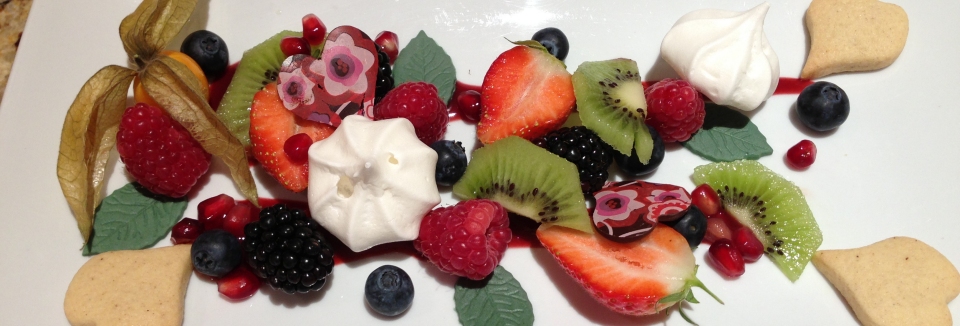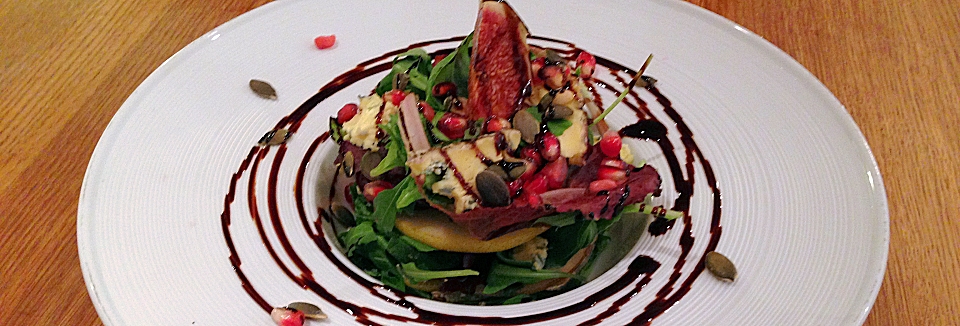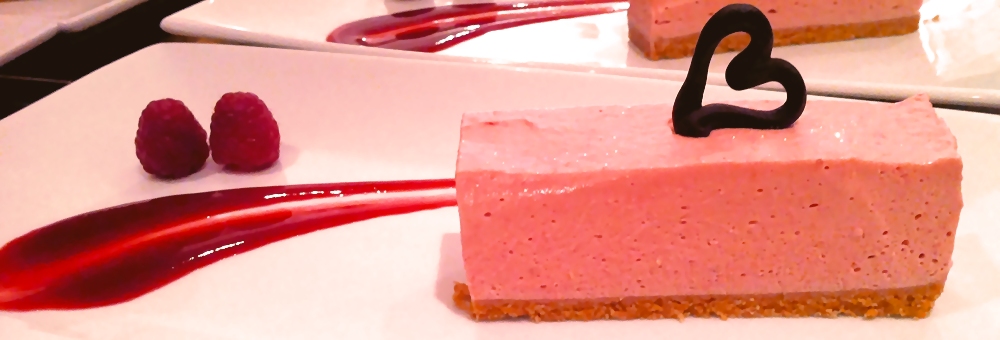Its artists produced woodblock prints and paintings of subjects including female beauties; kabuki actors and sumo wrestlers; scenes from history and folk tales; travel scenes and landscapes; Japanese flora and fauna; and erotica. Furthermore, you may come across various art sources that use these two terms (elements and principles) interchangeably. The vantage point in this painting is more from an aerial viewpoint, which heightens the dramatic effect. The main focal point of the print, the wave, is placed almost entirely on the left side of the work. These prints rely on a single-point perspective rather than a traditional foreground, middle ground, and background, which Hokusai consistently rejected. Rhythm is mainly created through repeating elements or placing them in patterned arrangements. This may be, in part, to encourage you to learn how to dig for information. The principles are rules for combining design elements. Woodblock print. Is the great wave based off of a wave the creator saw or is it a random wave he created? Writing Sentences With Helping Verbs. [18], Nineteenth-century private collectors were frequently the source of museum collections of Japanese prints; for example, the copy in the Metropolitan Museum came from Henry Osborne Havemeyer's former collection, which his wife donated to the museum in 1929. Form is three-dimensional with volume, which includes height, depth, and width. However, he was also responding to a boom in domestic travel and the corresponding market for images of Mount Fuji. This brings the earthly elements together at the center, bringing the eye outward again to take in the wave once again. In the background is Mount Fuji and its snow-capped summit;[20] Mount Fuji is the central figure of the Thirty-six Views of Mount Fuji series, which depicts the mountain from different angles. The big wave's foam-curves generate other curves, which are divided into many small waves that repeat the image of the large wave. Hokusai made a wave painting series depicting different views of Mount Fuji. The boats' appearances can also be analysed in Hokusai's print Ssh Chshi from the series Chie no umi ("Oceans of Wisdom"), in which the boat moves against the current in a rightward direction, as shown by the boat's wake. Balance is about the compositional weight of visual elements, whether these are applied in such a manner that provides the effect of even distribution. As we explained above, these are the visual tools used to compose a painting. This tells of the conditions that poor Japanese fishermen had to endure in order to work, telling a small story about one of the various classes that were depicted in Hokusai's other prints. When we look at The Great Wave off Kanagawa meaning and inherent symbolism it could point to the idea of nature and man and these contrasting forces. Texture gives character to an art form and creates psychological effects for us, the viewers when we engage with it. Hiroe Nirei discusses some of the studies written about the iconic image. If you're behind a web filter, please make sure that the domains *.kastatic.org and *.kasandbox.org are unblocked. The Ukiyo-e prints became widespread pieces of art that were also affordable for many in Japan. While the wave in The Great Wave moves in the opposite direction of the Japanese reading from right to left the wave and birds in Kaijo no Fuji move in unison. This innovation was an immediate success. It is known simply as the Great Wave. [22], The scene shows three oshiokuri-bune, fast barges that were used to transport live fish from the Izu and Bs peninsulas to markets in Edo Bay. According to the Merriam-Webster Online Dictionary, the word principle means: a comprehensive and fundamental law, doctrine, or assumption, including a rule or code of conduct. Do you mean like, 'was this painted from a photo'? There is a science to color and many great artists have celebrated the inherent magic of color too, just think about Wassily Kandinsky or Piet Mondrian, to name a few. [24] Hokusai's goal for the series appears to have been depicting the contrast between the sacred Mount Fuji and secular life. We will also see smaller waves filling up the foreground. Subsequently, Hokusai created a Japanese variant of linear perspective. We will also look at these in more detail below. In the latter two Hokusai paintings mentioned above, there are boats on the ocean, and they navigate through the overwhelmingly large waves swaying them about. ", "How Hokusai's "The Great Wave" Went Viral", "Under the Wave off Kanagawa (Kanagawa oki nami ura), also known as The Great Wave, from the series Thirty-six Views of Mount Fuji (Fugaku sanjrokkei)", "Hokusai "Mad about his art" from Edmond de Goncourt to Norbert Lagane", "La "Grande vague" du Japonais Hokusai, symbole de la violence des tsunamis", "Hokusai and Hiroshige: Great Japanese Prints from the James A. Michener Collection at the Asian Art Museum", "The making and evolution of Hokusai's Great Wave", "Hokusai: the influential work of Japanese artist famous for "the great wave" in pictures", "The Great Wave at Kanagawa (from a Series of Thirty-six Views of Mount Fuji)", "Seeing Triple: The Great Wave by Hokusai", "Japonism Impressionism Exhibition in Giverny Impressionist Museum 2018", "Iconic 'Great Wave' Print Sells for $2.8 Million at Christie's", "Hokusai and Debussy's Evocations of the Sea", "Letter 676: To Theo van Gogh. The original audience for Hokusais prints was ordinary townspeople who were followers of the Fuji cult and made pilgrimages to climb the mountain, or tourists visiting the new capital city. The title of the series is written in the upper-left corner within a rectangular frame, which reads: "//" Fugaku Sanjrokkei / Kanagawa oki / nami ura, meaning "Thirty-six views of Mount Fuji / On the high seas in Kanagawa / Under the wave". The Great Wave off Kanagawa (between 1830 and 1832) by Katsushika Hokusai, located in the Metropolitan Museum of Art in New York City, United States; Katsushika Hokusai, Public domain, via Wikimedia Commons It is also represented through other elements like color variations and lines to indicate a contour or outline. what is the word for a passion for collecting Japanese art, japonisme :::) is the word for a passion for collecting japanese art. Free shipping for many products! We also see how Hokusai plays on different geometric shapes and lines in The Great Wave painting, from the beautiful curving wave in the foreground to the smaller triangular shape of Mount Fuji in the background. An examination of the wave on the left side reveals many more "claws" that are ready to seize the fishermen behind the white foam strip. All rights reserved. Space can be positive or negative, open or closed. The Great Wave off Kanagawa is a Japanese woodblock print made by Katsushika Hokusai back sometime between 1829 and 1832. [23][24] According to analysis by Cartwright and Nakamura (2009), the boats are located in Edo (Tokyo) Bay off Yokohama in present-day Kanagawa Prefecture, with Edo to the north and Mount Fuji to the west. The primary colors consist of red, blue, and yellow and the secondary colors consist of purple, orange, and green. As we mentioned above, value refers to the lightness and darkness of any color. For other uses, see. Ukiyo-e prints are recognizable for their emphasis on line and pure, bright color, as well as their ability to distill form down to the minimum. There are eight rowers in each boat as well as what seems to be two people near the front side of the boat. It provides a continuing contrast, or some sources describe chaos, which engages the viewer and maintains a level of interest and awe for the composition; it evokes emotion and expression. Other reproductions and prints are housed at different institutions worldwide. He apparently produced approximately 30,000 prints during his art career. Sources state that uki means sadness and yo means life. Bings active involvement in procuring Japanese art and objects aided in its dissemination in the West. Some notable artists who made use of thick lines are Edvard Munch and Vincent van Gogh. Japan, Edo period (16151868). Under the Wave off Kanagawa (Kanagawa oki nami ura), also known as The Great Wave, from the series Thirty-six Views of Mount Fuji (Fugaku sanjurokkei), ca. Artist Abstract: Who Was Katsushika Hokusai? [2] It has influenced several notable artists and musicians, including Vincent van Gogh, Claude Debussy, Claude Monet, and Hiroshige. From the Dutch artwork Hokusai became interested in linear perspective. It is a woodblock print depicting a gigantic furious wave. Much of the art history curriculum comes from www.smarthistory.org I went there, found the article in question, and found the citation at the bottom of the page. To the left-hand border of the print, there are two vertical signatures or inscriptions in traditional Japanese script, possibly Kanji. The Great Wave off Kanagawa would not have been as successful in the West if audiences did not have a sense of familiarity with the work. This print at The Metropolitan Museum of Art, Art of the Pleasure Quarters and the Ukiyo-e Style on the Metropolitan Museum of Art's Heilbrunn Timeline of Art History, Woodblock Prints in the Ukiyo-e style on the Metropolitan Museum of Art's Heilbrunn Timeline of Art History, The Floating World of Ukiyo-e, a Library of Congress exhibition site. This has been a notable feature of this famous Japanese art woodblock print, but also of the overall series, Thirty-six Views of Mount Fuji. Although this principle might seem like Balance, there is a slight difference in its implications. Hokusai was born in 1760 in Edo (now Tokyo), Japan. In the principles of design in art, it is important not to confuse scale with proportion. It is Japans highest mountain, over 12,000 feet high. Mrs. H. O. Lines can also appear thick, thin, curved, straight, short, long, or patterned, which creates varying effects in a composition. These famous Japanese art pieces became widespread pieces of art for many European artists we are all familiar with today. Positive space is the object or subject itself in artwork, for example, if a pair of scissors is drawn, the positive space would be the pair of scissors. Left: A 3-D scanning microscope zooms into a detail in the deep-blue hollow of the wave. The men in the boats seem to be in a losing battle against the sheer force and power we see in the magnitude of the wave about to crash over them. Katsushika Hokusai's Under the Wave off Kanagawa, also called The Great Wave has became one of the most famous works of art in the worldand debatably the most iconic work of Japanese art. These are important stylistic elements mentioned above, ones which we will discuss as part of The Great Wave off Kanagawa meaning below. Hokusais series Thirty-Six Views of Mount Fuji also influenced other artists like the French Henri Rivire who created his lithograph series called 36 Views of the Eiffel Tower (1902). Get the latest information and tips about everything Art with our bi-weekly newsletter. This also shows us how Hokusais use of perspective offers different interpretations. | RIGHT: Sudden shower over Shin-hashi bridge and Atake (1857) by Utagawa Hiroshige; Formal Analysis: A Brief Compositional Overview, Famous Paintings About War and Battles Best War Artwork, What the Water Gave Me by Frida Kahlo A Painting Analysis, Henry Ford Hospital (The Flying Bed) by Frida Kahlo A Look, Polychrome woodblock print, ink and color on paper, 25.7 x 37.8 centimeters (around 10 x 14 inches), The Metropolitan Museum of Art (MET), New York, United States, Estimated worth around millions of dollars. This is like open and closed spaces, where the object would be in the closed space and the open space would be around it. This is strikingly evident in the towering wave that breaks over the leftmost boat. If a white is added to a color it becomes known as a tint and the value of it becomes lighter, and conversely, if black is added to a color it becomes a shade and the value becomes darker. Fluxus Movement The Avant-Garde Fluxus Movement Explained. LEFT: HokusaiHokusai, Public domain, via Wikimedia Commons | MIDDLE: Hokusai, Public domain, via Wikimedia Commons | RIGHT: Hokusai, Public domain, via Wikimedia Commons. They will just draw the outside lines of wave, we call this the contour lines. The curves of the wave and hull of one boat dip down just low enough to allow the base of Mount Fuji to be visible, and the white top of the great wave creates a diagonal line that leads the viewers eye directly to the peak of the mountain top. As the eye travels down the wave, one notices the fishermen in their boats being drawn into the crest of the wave. [65], As the most famous Japanese print,[21] The Great Wave off Kanagawa influenced great works: in painting, works by Claude Monet; in music,[24] Claude Debussy's La Mer; and in literature, Rainer Maria Rilke's Der Berg. Organic forms can originate from nature and are more random and asymmetrical; geometric forms are described as mathematical, namely, the cylinder, cube, cone, or pyramid, and sphere. This was reportedly discovered after scientific studies were done on Hokusais print. Japonism included a wide variety of Japanese arts and designs and was often appropriated from the perspective of the West. There are vertical, horizontal, and diagonal lines. Direct link to Tammy Song's post How did the museum get th, Posted 2 years ago. At the front of each boat are two more relief crew members; 30 men are represented in the picture but only 22 are visible. (25.7 x 37.9 cm). The Metropolitan Museum of Art, New York, H. O. Havemeyer Collection, Bequest of Mrs. H. O. Havemeyer, 1929 (JP1847). Although this is not widely considered a narrative piece, I can see a possible narrative read from the outside in. Left: Color swatches showing indigo and Prussian blue. This question can also have a double meaning; in case you wondered where the print is now, it is housed at the Metropolitan Museum of Art in New York City. These could almost be seen in your paintbrushes, so to say; each paintbrush will be unique, providing a specific function to bring the composition together. As printing was done by hand, printers were able to achieve effects impractical with machines, such as the blending or gradation of colours on the printing block. [23][67][68], Henri Rivire, a draughtsman, engraver, and watercolourist who was also an important figure behind the Paris entertainment venue Le Chat Noir, was one of the first artists to be heavily influenced by Hokusai's work, particularly The Great Wave off Kanagawa. Springtime in Enoshima was believed to have been inspired by the painting A View of Seven-League Beach (1796) by Shiba Kkan, a Japanese artist who also painted during the Edo period and created Ukiyo-e prints. He is an island, a continent, a whole world in himself. Shape gives the contour of an object, which essentially comprises lines. Fuji on the obverse of the 1,000 yen banknote will be replaced by a reproduction of the Great Wave, including the portion of the print which depicts Mt. "Is this the most reproduced artwork in history? [18][19] The landscape is composed of three elements: a stormy sea, three boats, and a mountain. Our gaze is continuously pulled by the current of curving motions created from the waves in front of us.
07770 673450 / 07885 042731
Supper Club, Wokingham








